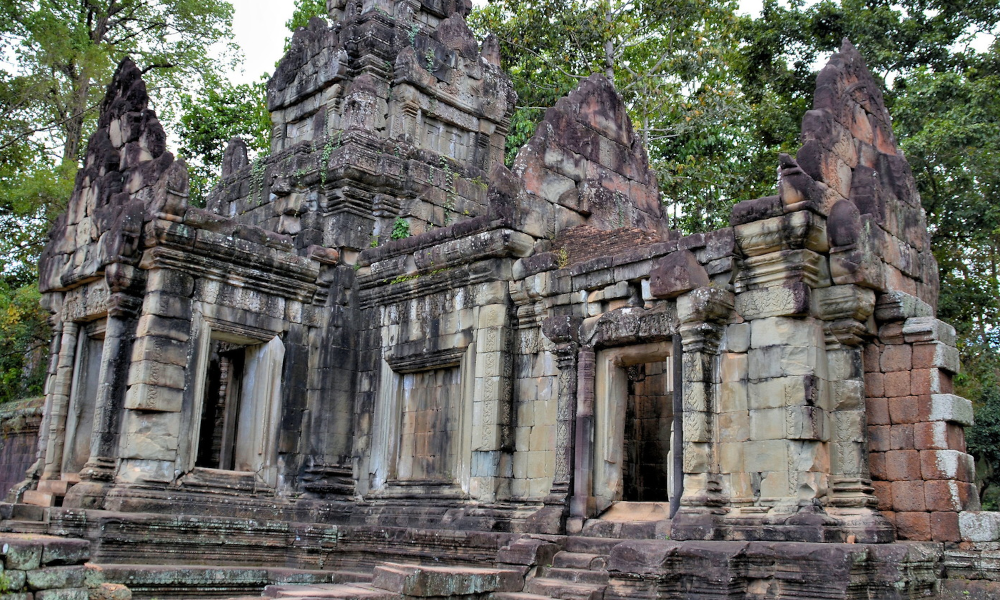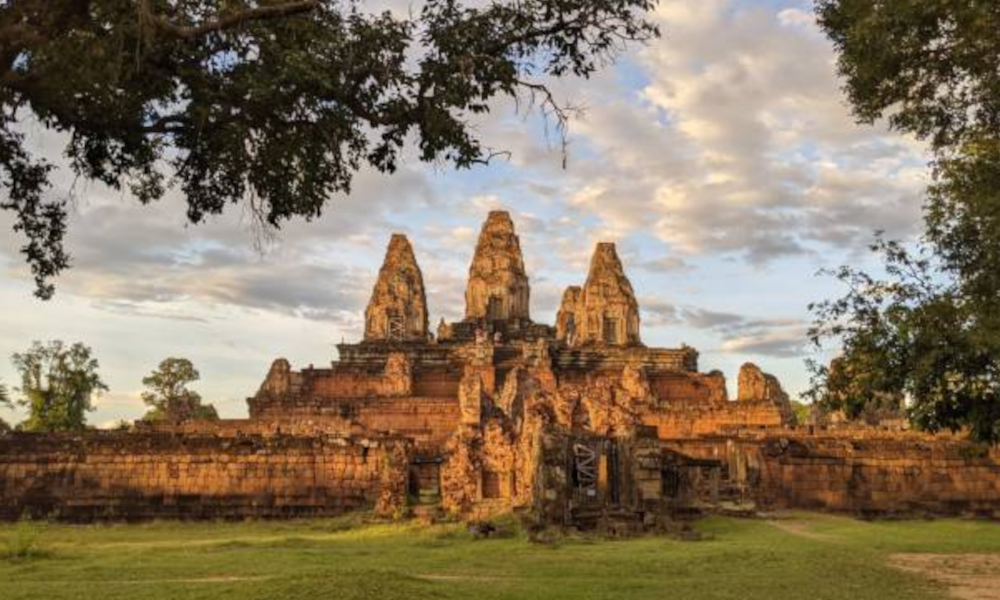Preah Pithu Group

Preah Pithu Group is A cluster of five modest temples situated in a serene location across from the Terrace of the Leper King. The majority of these structures date back to the 12th century, although one temple, which is Buddhist, may originate from the 14th century. While the temples are in a state of disrepair, several intriguing carved lintels can be found strewn across the ground.
Table of Contents
ToggleThis site is located in the heart of Angkor Thom, yet it attracts fewer visitors compared to the other temples in the vicinity. A tranquil jungle area lies behind the group of temples.
The Angkor Wat Grand Circuit Tour does not include a visit to Angkor Wat itself. Instead, the itinerary focuses on the temples located to the...
Layout and Design
The five temples are in a state of disrepair, with the majority of their upper levels having been destroyed. Nevertheless, numerous carvings remain visible, representing some of the finest examples of Khmer artistry.
Temples “T” and “U”
Constructed concurrently, these temples are aligned along the same east-west axis and are encircled by a shared moat. Both temples face west, which is atypical for Khmer architecture.
- Temple “T” features a sandstone enclosure measuring 40 by 45 meters, complete with two entrance structures known as gopuras. A sanctuary tower, approximately 6 meters in height, is present. The door lintel is adorned with a depiction of the “Churning of the Sea of Milk,” while the walls exhibit decorations in the Bayon style.
- Temple “U,” slightly smaller at 35 by 28 meters, closely resembles Temple “T” but lacks the entrance structures. The lintels are embellished with carvings illustrating Shiva in a dance between Vishnu and Brahma, along with another representation of the “Churning of the Sea of Milk” on the northern lintel.
Temple “V”
Unlike the others, Temple “V” does not have an enclosing wall. On its western side, a causeway leads to an extended terrace. The sanctuary tower is situated on a two-tiered platform, showcasing decorations in the Angkor Wat style.
Temple “X”
Preah Pithu X serves as a Buddhist temple. Its design is akin to that of the other temples, though the carvings are not fully intact. Inside the sanctuary tower, one can observe carvings depicting Buddha and various Buddhist motifs.
Temple “Y”
In contrast to the others, Temple “Y” is built directly on the ground rather than on a platform. It is unique in that it faces east. Although the chamber has largely collapsed, two prominent carvings remain, representing the Hindu deities Krishna and Vamana.
History of Preah Pithu Group
Limited information is available regarding the Preah Pithu group temples. It is believed that their construction occurred during the 12th and 13th centuries, specifically under the reigns of kings Suryavarman II and Jayavarman VIII. Temples T, U, V, and Y are identified as Hindu temples, likely constructed before Temple X, which is recognized as a Buddhist temple.
Preah Pithu X may have been erected as late as the 14th century. It is important to note that these temples were not all constructed within the same timeframe.
The prevailing theory suggests that the Preah Pithu complex was abandoned in the 16th century, coinciding with the decline of other temples in the vicinity.
In the early 20th century, efforts were made to clear the temples, and further restoration took place in the late 20th century to ensure the area was safe for visitors.
Should Visit or Not
The entire region offers a delightful environment for exploration. One can stroll from the terraces to the quaint shops and eateries located across the way. Venturing further back, you will discover a secluded area embraced by trees, where the five temples of Preah Pithu are situated.
While Preah Pithu attracts a considerable number of visitors, it remains far less frequented than the more renowned temples nearby. The exquisite carvings, the concealed stones, and the encircling forest contribute to a truly enjoyable experience.
Location & How to Get There
Prasat Preah Pithu is situated within Angkor Thom, directly across from Tep Pranam and the Terrace of the Leper King. Despite their proximity to these other temples, the structures at Preah Pithu were likely constructed during different periods. The site is enveloped by trees, providing a tranquil environment for visitors.
To access this cluster of temples, proceed northward from Bayon. Continue past the Terrace of the Elephants and the Terrace of the Leper King, as if you are making your way to the North Gate. On your right, you will encounter a small collection of market stalls.
Navigate between the two sets of market stalls, where you will first come across “U” and “T.” To the north, you will find “V,” while to the east, “X” and “Y” will be visible.

